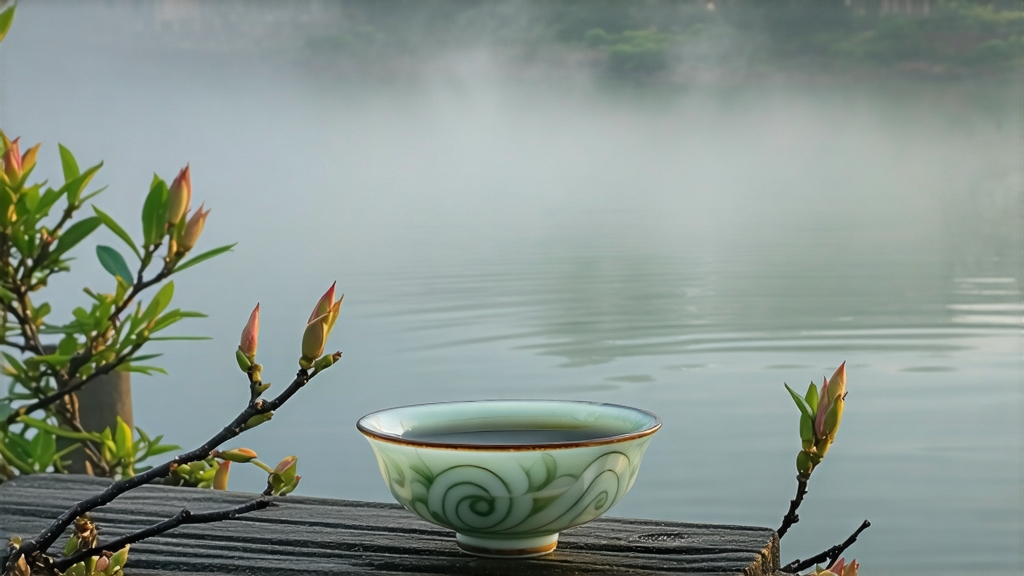
Tucked between the mist-laden hills of Dongting East Mountain and the shimmering waters of Lake Tai in Jiangsu Province, Biluochun—literally “Green Snail Spring”—has been seducing tea lovers since the late Ming dynasty. According to local lore, a tea-picking girl once tucked fresh leaves into her bodice to free both hands; the warmth of her skin released an intoxicating perfume that startled passing monks, who christened the tea “Scary Fragrance.” The Kangxi Emperor, touring the region in 1699, found the name inelegant and rechristened it Biluochun for its snail-shell curl and early-spring harvest. Thus a monarch’s whim immortalized a leaf that would become one of China’s Ten Famous Teas.
Biluochun is not a single cultivar but a constellation of micro-varieties anchored by two local bushes: Xiao Ye (“Small Leaf”) and Dongting群体种. Xiao Ye yields the finest imperial-grade lots—barely 5 kg per mu—whereas the hardier群体种 supplies the market’s more affordable grades. Within each cultivar, plucking standards create further stratification: one bud, one bud-and-half-open-leaf, or one-bud-and-two-leaves. The top tier, called “Supreme Early Spring,” is picked during the Qingming festival window when amino acids peak and tannins slumber, giving the liquor its hallmark sweetness.
The craft begins before dawn when mountain air is still lacquered with dew. Pickers wear cotton gloves to avoid fingernail bruises and deliver the leaves in shallow bamboo trays within two hours. Once in the shed, the fragile tips are “tan fang”—spread 2 cm thick on reed mats—to shed surface moisture. When the leaves lose about 10 % weight and emit a faint cucumber note, they are wok-fired in 90 °C bursts lasting 3–4 minutes. The master’s wrist circles 120 times per minute, coaxing enzymes to surrender grassiness while locking in floral precursors. Immediately after killing-green, the leaves are rolled into tight spirals on a bamboo sieve placed over a charcoal brazier whose temperature hovers at 65 °C. Here the “scenting” occurs: baskets of just-picked wild mandarin blossoms and peach petals are stacked above the tea, allowing their volatile oils to migrate into the still-warm leaf. No perfume is sprayed, no petals remain in the finished tea; the fragrance is a ghost borrowed from spring orchards. A final low-temperature bake sets the curl and reduces moisture to 4 %, ensuring a shelf life of eighteen months if stored below 5 °C and 50 % humidity.
To awaken Biluochun without scalding its delicacy, choose a tall cylindrical glass or a 120 ml porcelain gaiwan. Pre-warm the vessel with 80 °C water, then add 3 g of tea—roughly one heaping teaspoon. The first infusion, 15 seconds, is a “wake-up rinse” discarded to polish the leaf surface. The second pour, also 80 °C, lasts 20 seconds. Watch the spirals unfurl like miniature ferns, tinting the liquor the color of pale chardonnay. Decant fully to prevent the soluble catechins from over-asserting astringency. Subsequent infusions add five seconds each; a quality Biluochun yields five clean brews before its soul thins.
Tasting begins with the “dry nose.” Cradle a few cooled leaves in your palm, cover with the other, and inhale through the tunnel formed by your thumbs; expect a kaleidoscope of loquat, lily, and a whisper of milk chocolate. Next, sip with the “three-breath” method: hold the liquor on your tongue, part your lips slightly, and draw air in three quick streams to nebulize the aromatics. Swallow, then exhale through the nose to catch the returning florals—what Chinese cuppers call “the back rhyme.” A top-grade Biluochun finishes with a cooling sensation at the back of the throat, akin to eating a ripe pear next to a waterfall.
Unlike robust greens such as Longjing, Biluochun prefers solitude; pairing it with food is like asking a harp to duel a drum. If you must nibble, choose unflavored white peach or steamed freshwater shrimp—both echo its own subtle sweetness. In Suzhou teahouses, it is served